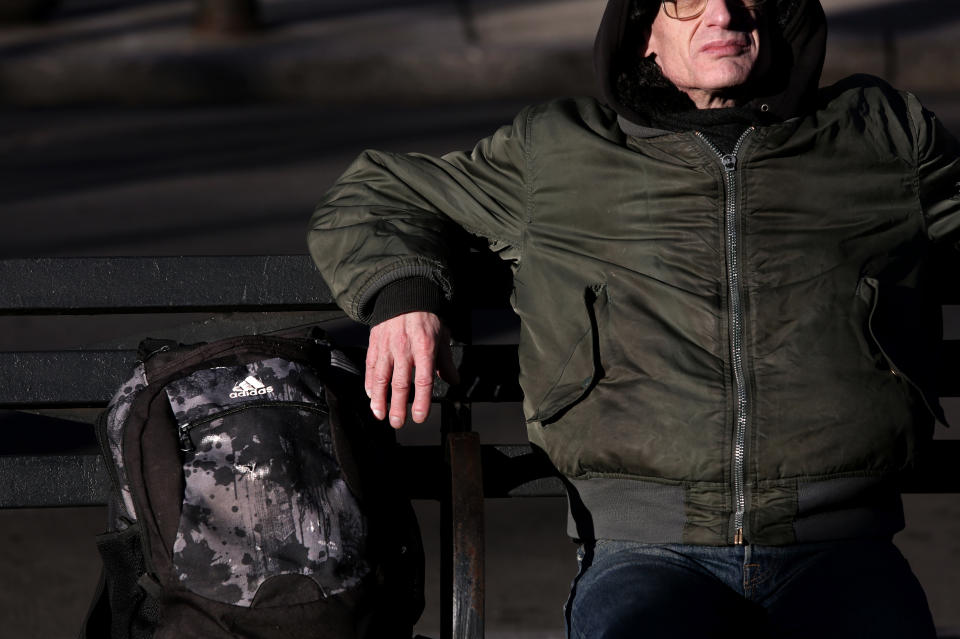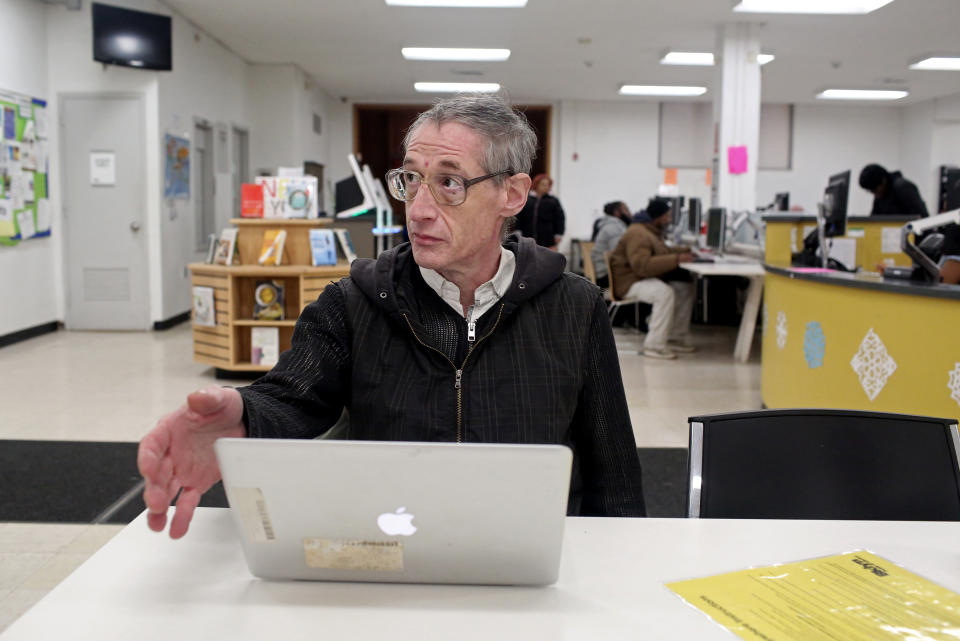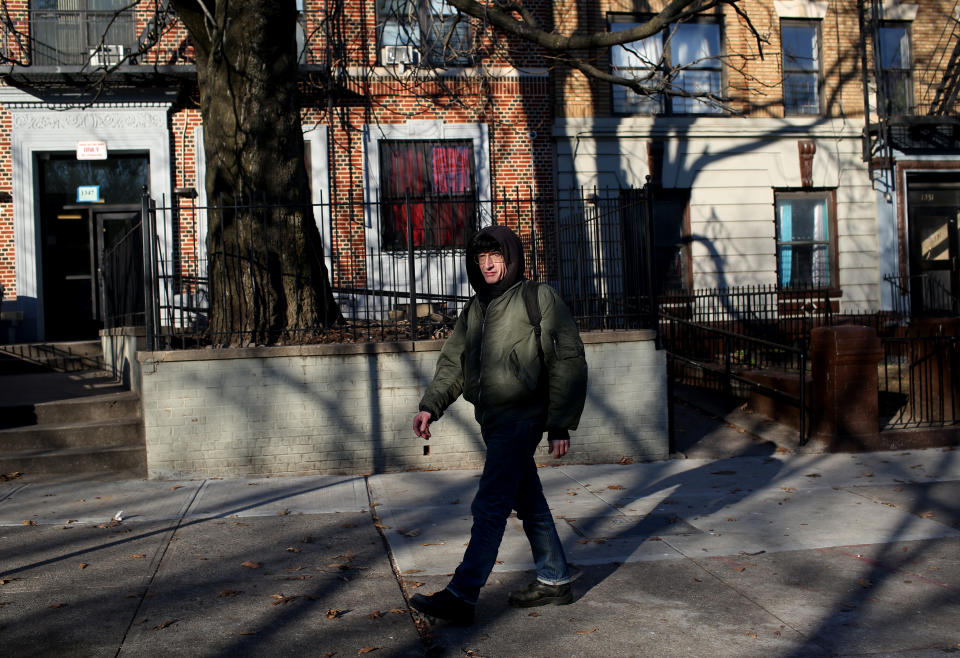How to make homeless shelters safer

The sound is as loud as a gunshot, smashing the small window of the closed door about a yard from my bed in a homeless shelter in Brooklyn. I jump to my feet in the semi-darkness, ready to defend myself or run. Glass shards litter the floor and someone in the hallway is shouting, “I broke my hand! I broke my hand!” Through the now empty window frame that looks onto the hallway I see two security guards approaching the resident who has punched out the window. After radioing for an ambulance, the guards escort the injured party out of the building. Despite the explosion of noise, my four roommates are still asleep. Shaken, I get back into bed and close my eyes.
While random violence is not unheard of at the Renaissance Men’s Shelter — the facility where I’ve lived since May due to a mental health condition that left me homeless at the age of 58 — it’s thankfully not routine. If I had to guess, I would bet the resident who broke the window is an addict — as opposed to a psychiatric case — because during the six months I’ve lived here, the only violence I’ve seen has been committed by drug abusers. That observation raises difficult questions about the way that cities and towns across America are trying to deal with a rise in homelessness.

Three months have passed since I first wrote about my life at the shelter for Yahoo News, and each day I’ve wondered if housing the mentally ill together with addicts — many of whom have just left prison — is the best solution to an admittedly daunting problem. One reason why homelessness is such a difficult crisis to solve is simple demographics. Figures compiled by the Substance Abuse and Mental Health Services Administration show that at least 25 percent of the homeless in the U.S. suffer from mental illness. The National Coalition for the Homeless estimates that 38 percent of those without homes are alcohol dependent, while 26 percent are addicted to drugs.
In a homeless shelter, that mix can prove volatile. According to the Harvard University Medical School website, “Many of the mentally ill avoid shelters because they fear violence and theft or cannot tolerate the noise, crowds, and confusion.”
Speaking to the staff at Renaissance, I was told there were no homeless shelters in New York City specifically devoted to either mental health cases or to residents addicted to drugs. Still, I’m grateful for what I have. Renaissance gives me a clean, dry place to sleep at night, along with a large locker in which to store my belongings. It also provides three balanced daily meals to all residents, and a crew of caseworkers to help residents navigate the byzantine process of finding public housing. The area that is in greatest need of improvement is safety: With approximately 200 beds, the shelter is designated to serve mentally ill and chemical abusers (MICA), but the former are generally less threatening to other residents. And, while there are plenty of instances of volatile mental patients and harmless addicts, an addict in need of a fix is potentially more violent than a mental patient whose medications are dispensed daily by the shelter’s nurse.

Two residents I’ve gotten to know illustrate the distinction well (all of the names of the residents in this piece have been changed at the request of the shelter). Ezra is about 30 years old and a schizophrenic. Once he becomes comfortable around a person, he lets his guard down and begins conversing with a variety of deceased people from his past. He’s adept at imitating the tones of voice and dialects of the people speaking in his head, and the discussions can go on for hours.
When Ezra isn’t interacting with unseen companions, he is stable and grounded (he previously held a job at Walmart), and exhibits a keen intelligence. He is also very musical. As a former professor of music prior to my arrival at Renaissance, I’ve been teaching him to read and notate music. He would also like to attend college to study photography and illustration and speaks of being at a turning point in his life. Raised in the South, he has come to New York to find work and, if possible, to locate his birth parents, whom he has never met.
Ezra doesn’t let his unusual inner life prevent him from behaving ethically: I float him a couple dollars once in a while and he’s very conscientious about paying me back. I haven’t seen him express anger or frustration with others — in contrast to many of the people I’ve encountered in the shelter — though he has as much cause as anyone to feel strong emotions. He cultivates a certain maturity and integrity, so that acting childish would be beneath him.

Eddie, another resident, is in his early 60s and is clinically sane but addicted to crack, which costs him a hundred dollars a day. He’s more prone to violence than Ezra, and struck a roommate who Eddie said didn’t bathe enough. Eddie has stolen shoe laces from other residents and has been caught ransacking lockers in search of money to buy crack. When his SSI check doesn’t cover his monthly cocaine expenses, he sells his pain medication or shoplifts to cover the gap. Eddie says he has been arrested over 50 times in his life, for which he mostly blames New York City’s stop-and-frisk policy.
Earlier this month Eddie went on a crack binge and, after going multiple nights without sleep, ended up in bed for weeks afterward. He’s been in rehab before, and is scheduled to go back on an outpatient basis next week. But it seems unlikely that he will do much to improve his life at this point because he consciously accepts the idea that coke makes life worth living, even though this means harming himself and others.
The active drug users at Renaissance seem primarily concerned with scoring their next dose and avoiding withdrawal. About four months ago, I was accosted in one of the bathrooms by an older addict demanding my wallet. If he hadn’t been so intoxicated, I might not have escaped unharmed. Incidents like this — or like last week, when an alcoholic roommate woke me up twice by falling on me — make me think I would feel more secure if the drug users and mental patients each had a facility to themselves.
Of course, a substantial number of my fellow residents belong to both categories. I’m fortunate in not being an addict or schizophrenic: My diagnosis is refractory depression, a disabling condition that does not respond to traditional therapy and medication. My treatment involves once-a-month sessions of electro-convulsive therapy, otherwise known as ECT. While it keeps me out of the hospital, it has debilitating side-effects, such as short-term memory loss and exhaustion that forced me to quit my teaching job.

While severe depression slows me down, it doesn’t stop me from looking for my own place, though I’m still in a holding pattern of waiting, as I wrote last October, for my government paperwork to arrive. When I first entered the shelter system, a social worker told me that she knew of no one in the shelters who found a place to live in less than a year. I didn’t believe her then, but now that seven months have elapsed and my application for public housing is still not ready for submission to the city, I’m less skeptical. However, I still notice residents moving out of the shelter into apartments, and I still see new faces arrive, so it’s encouraging to know the process is functional.
There are other reasons to be hopeful. After I published my first piece at Yahoo News, some old friends contacted me, offering clothing and food. Some invited me out for a meal, and a group of musicians got together and raised money that enabled me to pay off some outstanding medical bills. Most incredibly, I received a $10,000 grant from an arts organization as a result of the publication, money I’m saving for rent in anticipation of leaving the shelter. Even with this recent income, however, my earnings for the year put me below the poverty level.
Overall, I see myself as lucky, and I look forward to the time when I can look back at my stay at Renaissance as a temporary necessity. But others I’ve met here face bigger challenges, and as the country addresses the growing problem of homelessness, I believe it should reconsider the way it can best shelter those in need as they look for permanent housing. One of my shelter friends, 29-year-old Manuel, who has a medical diagnosis of anxiety-depression, deteriorated once he entered the shelter system. The threat of drug-induced violence caused him to experience his first panic attack after moving into the shelter system a year ago, and he has had a dozen more over the past six months, each of which required him to be hospitalized. With the help of a regimen of Zoloft, Manuel has been able to get the panic attacks under control, but I worry about stressors that might cause them to return.

Manuel’s story is not that unusual and I sympathize with him. Even though he’s strong and quite bright, the presence of addicts who often intimidate other residents is disconcerting — you’re always looking over your shoulder.
I think the residents with mental conditions would do better if we didn’t have to wonder who might become dangerously aggressive. The solution to this systemic problem is technically simple: take the two groups — addicts and the mentally ill — and assign each population to its own shelter.
_____
Read more from Yahoo News:
Did the U.S. 'assassinate' Iranian general or just kill him? Why it matters
Saudis warn of new destructive cyberattack that experts tie to Iran
Your Democratic primary cheat sheet: In the run-up to Iowa, who's still in the race?
PHOTOS: Ukraine International Airlines plane crashes in Iran killing all on board

